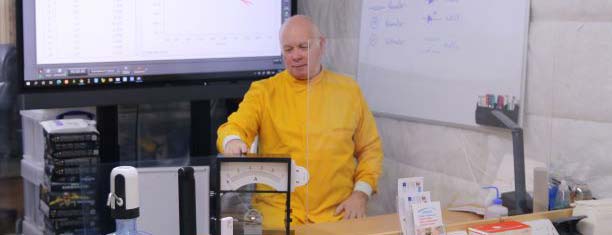The most useful item in a student's toolkit is the sharp pencil, long enough to hold and make sure its really sharp. Always have one pencil or better still two. Used lots in Science and Maths too. For graph work a sharp pencil can get an extra mark for those points being accurate, and a sharp pencil improves the line. A good rubber (not one on the end of a pencil) makes the mistakes easier to change.
Saturday 15 February 2020
Sunday 9 February 2020
Alcohols to Acids
Butanoic Acid is made from heating butan-1-ol with Acidified Potassium dichromate and refluxing for 30 minutes of so. The potassium Dichromate changes from orange to green as it is reduced and the alcohol is oxidised. After the reaction is complete then the apparatus is changed and set up as in the photograph to allow the butanoic acid to be distilled off from the mixture leaving the chromate behind and the butanoic acid is collected in the conical flask.
Tuesday 21 January 2020
Maths Tools, Whats needed
A good compass, with a built in pencil. It needs to be firm not loose.
360 degree protractor for doing bearings
A 30cm ruler with a slot in the middle for doing best fit lines
A bendy line for drawing curves
An irish compass very accurate for drawing circles with two pencils
Isosketch for drawing those plans and elevations
A good pencil sharpener
A good compass, with a built in pencil. It needs to be firm not loose.
360 degree protractor for doing bearings
A 30cm ruler with a slot in the middle for doing best fit lines
A bendy line for drawing curves
An irish compass very accurate for drawing circles with two pencils
Isosketch for drawing those plans and elevations
A good pencil sharpener
Thursday 12 November 2015
Measuring acceleration - Couple of videos
Using a mass over a pulley and a light gate to measure the acceleration due to gravity.
or using the old fashioned ticker tape timer to measure the trolley accelerating down a slope
Saturday 14 March 2015
Diffusion ISA Ideas for AQA
One way of doing this experiment is to add a crystal of KMnO4 to a large beaker containing 1 litre of water and waiting. In the images the breaker on the right was at 65C and the one on the left at 12.9C.
A small crystal of KMnO4 was dropped into the beaker and left for a short time.
The only problem with this experiment is that it is very difficult to quantify the rate of diffusion, so we are going to modify this experiment and use a colorimeter instead.
Measuring the green absorbance the graph above was produced as the KMnO4 cystal dissolved and spread throughout the hot water.
A small crystal of KMnO4 was dropped into the beaker and left for a short time.
The only problem with this experiment is that it is very difficult to quantify the rate of diffusion, so we are going to modify this experiment and use a colorimeter instead.
The better alternative.#
We used a colorimeter with pasco Sparkview software to observe the rate of diffusion.
A small crystal ( just under the cuvette in the picture) was placed into the cuvette and added to the colorimerer which recorded the results.
Thursday 19 February 2015
Classic results for NaOH and HCl titration
Getting a classic set of results for the titration of NaOH and HCl is not that difficult but it is nice when we can get students to this first time every time.
We are using the Pasco sensors and the Capstone software to capture the information.
In this experiment we are titrating NaOH against HCl.
We set the burette dripping at a constant rate and then measure the temperature change and the pH change using probes.
The magnetic stirrer ensures the compounds are well mixed and the Sparklink Air delivers the information to the laptop where the information is captured instantaneously.
The experiment is quick to set up and easy to use, and most importantly very easy to replicate.
We are using the Pasco sensors and the Capstone software to capture the information.
In this experiment we are titrating NaOH against HCl.
We set the burette dripping at a constant rate and then measure the temperature change and the pH change using probes.
The magnetic stirrer ensures the compounds are well mixed and the Sparklink Air delivers the information to the laptop where the information is captured instantaneously.
The experiment is quick to set up and easy to use, and most importantly very easy to replicate.
Subscribe to:
Posts (Atom)
Current speed on the River Thames
Measuring the current speed on the River Thames. It has dropped considerably in the past couple of weeks and was doing a steady 1.1 mph

-
Negative feedback is a difficult concept to try and get over so I tried using a balance board and the @pascoscientific smart cart strapped...
-
Getting a classic set of results for the titration of NaOH and HCl is not that difficult but it is nice when we can get students to this ...
-
Mechanics: the grand meeting of Maths & Physics! Using strobe light & a ball drop for gravity-acceleration calculations and SUVAT fo...





















